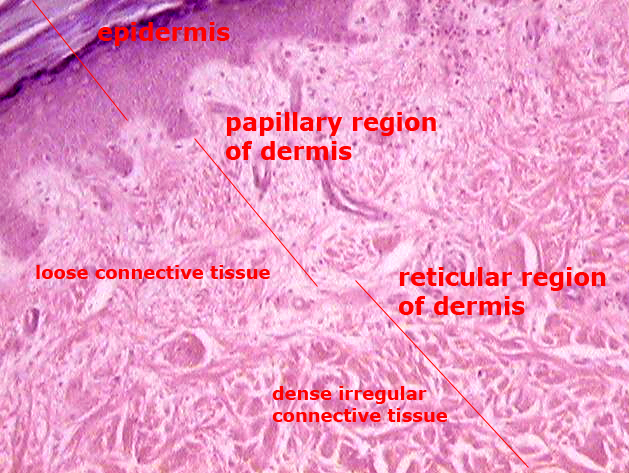The dermis consists of both loose connective tissue and dense irregular connective tissue, and within the connective tissue fibers and interstitial fluid matrix of the dermis are a number of important structures. Branches of blood vessels and nerves are extensive, and the hair follicles, sebaceous glands, arrector pili muscles, sweat glands, and special nerve endings are common through most of the dermis.
The dermis can be divided into two indistinct layers.
The thin papillary layer is near the surface of the skin and forms the papilary contact zone with the epidermis. If one could see the contact zone between dermis and epidermis it would be a bumpy surface, each bump of the dermis representing a dermal papilla. Connective tissue fibers in the papillary region are loosely arranged.
A deeper reticular layer of the dermis consists of a dense irregular connective tissue. Bundles of thick collagen fibers are often arranged parallel to the skin surface in the reticular layer forming lines of tension and cleavage.
Hair follicles and skin glands extend from the epidermis into the dermis.
Arrector pili muscles attach to the connective tissues surrounding the bases of hair follicles and extend laterally through the dermis and at an angle toward the surface.
